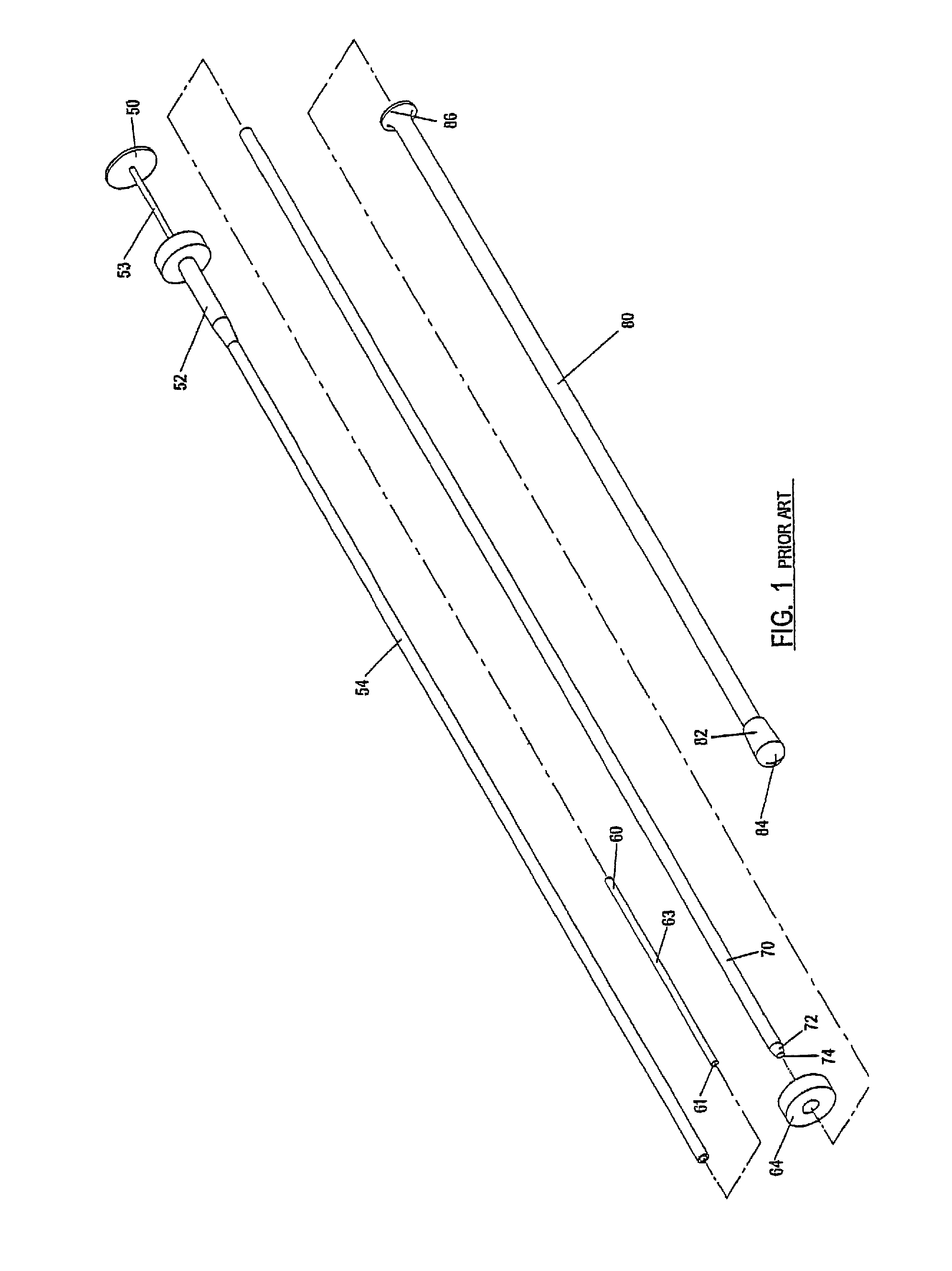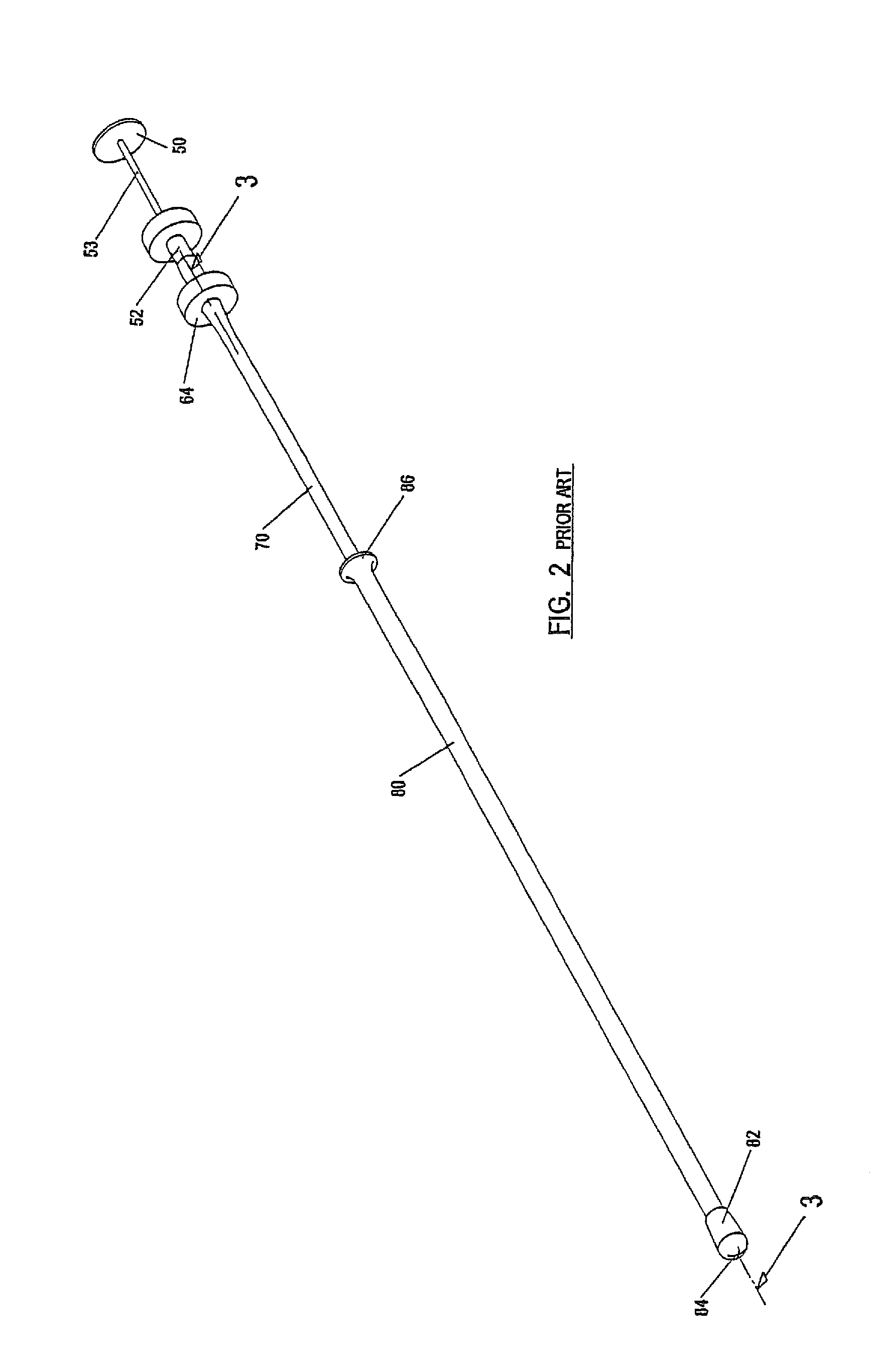Animal insemination sheath and methods of use
a technology for insemination sheaths and livestock, applied in animal reproduction, medical science, surgery, etc., can solve the problems of low efficiency, difficult use, dissuading a large percentage of technicians from choosing, etc., and achieve the effect of avoiding contamination of semen and cost effective and efficien
- Summary
- Abstract
- Description
- Claims
- Application Information
AI Technical Summary
Benefits of technology
Problems solved by technology
Method used
Image
Examples
Embodiment Construction
[0057]Referring to the drawings wherein like reference characters designate like or corresponding parts throughout the several views, and referring particularly to the prior art devices of FIGS. 1 and 2, it is seen that the artificial insemination gun, used particularly for bovines, comprises a tubular body 54 provided at one end with a head 52 for fixing a sheath and terminating in an annular flange 50 that is held in the technician's fingers. Adjacent to its other end, body 51 has a counterbore defining an inner shoulder against which bears one end of a supply of semen or straw 63 provided with a piston-plug 60. Body 54 further comprises a plunger-rod 53 which is slidably mounted in the body 51 so as to be capable of shifting by an end thereof the piston-plug 60 and consequently ejecting the semen contained in the straw 63. At its other end, the plunger-rod 53 has a flange 50 for pushing when dislodging semen. Body 54 and the plunger-rod 53 are, for example, made from stainless st...
PUM
 Login to View More
Login to View More Abstract
Description
Claims
Application Information
 Login to View More
Login to View More - R&D
- Intellectual Property
- Life Sciences
- Materials
- Tech Scout
- Unparalleled Data Quality
- Higher Quality Content
- 60% Fewer Hallucinations
Browse by: Latest US Patents, China's latest patents, Technical Efficacy Thesaurus, Application Domain, Technology Topic, Popular Technical Reports.
© 2025 PatSnap. All rights reserved.Legal|Privacy policy|Modern Slavery Act Transparency Statement|Sitemap|About US| Contact US: help@patsnap.com



